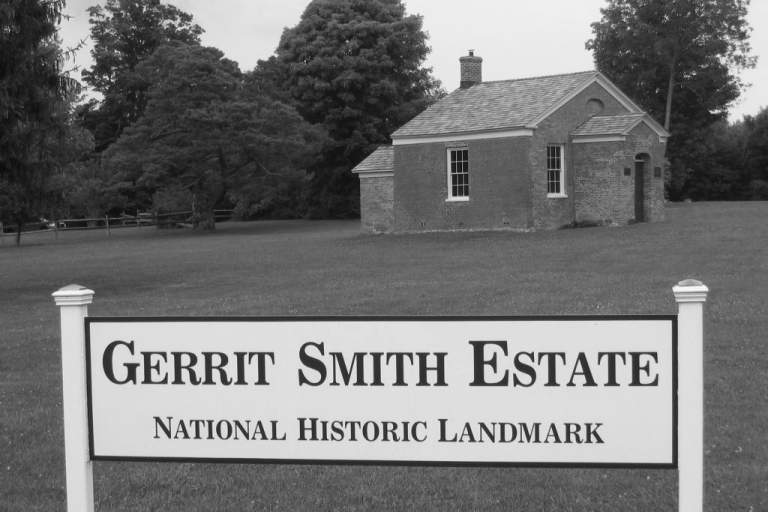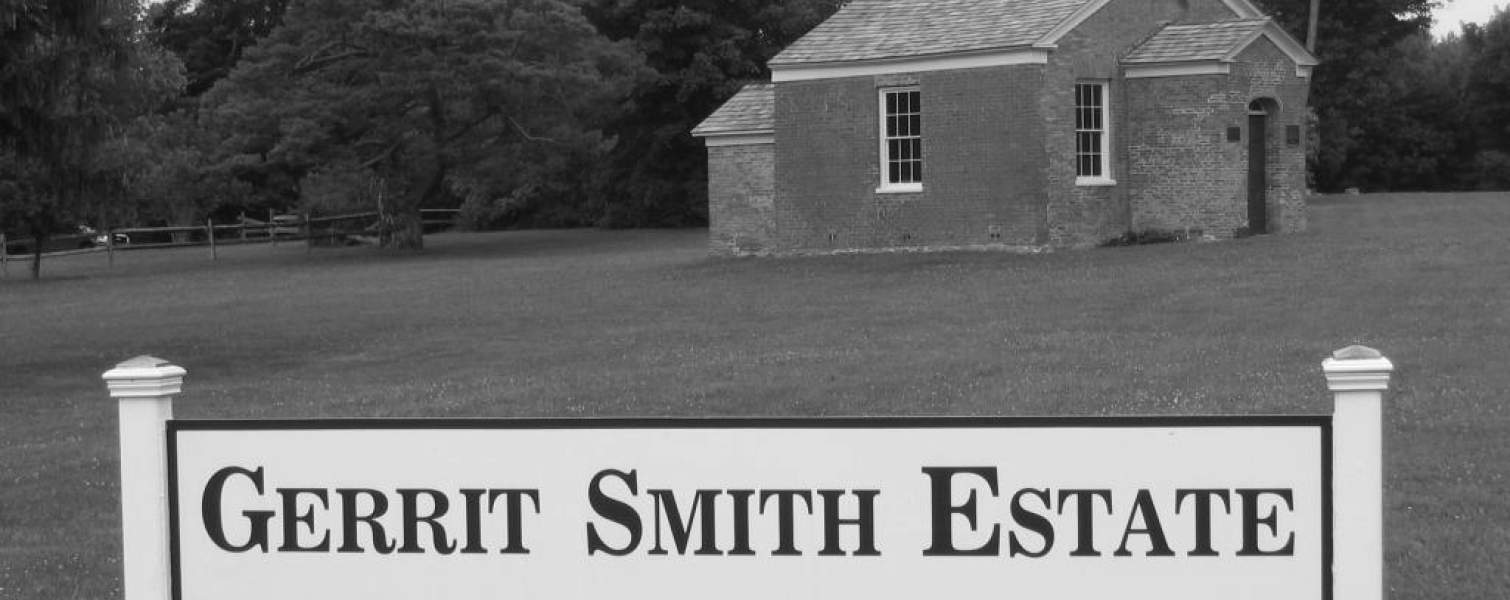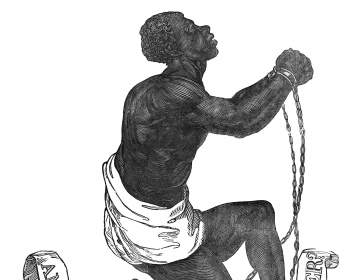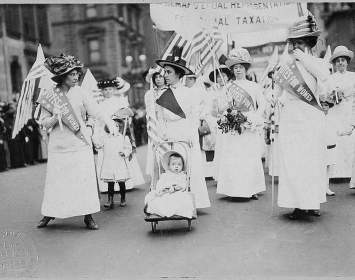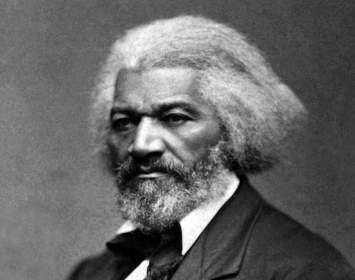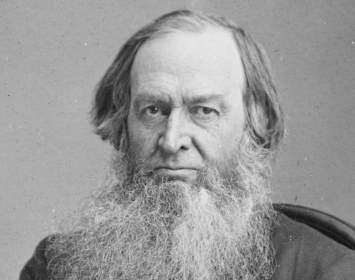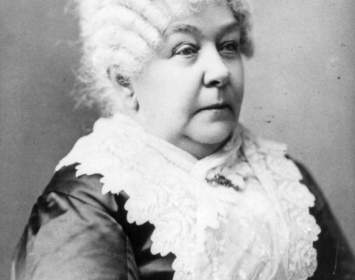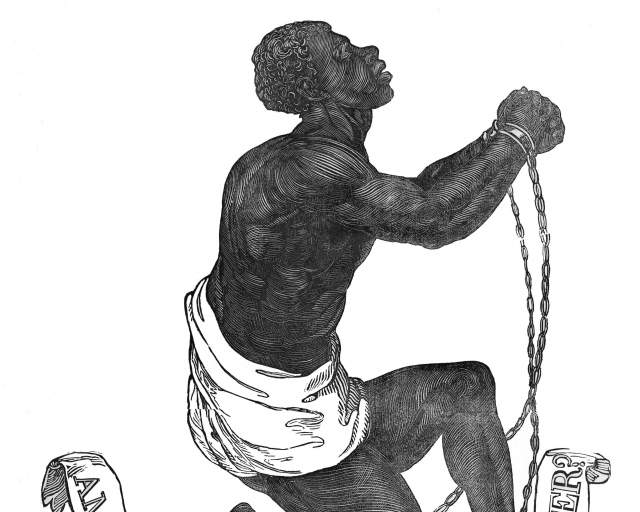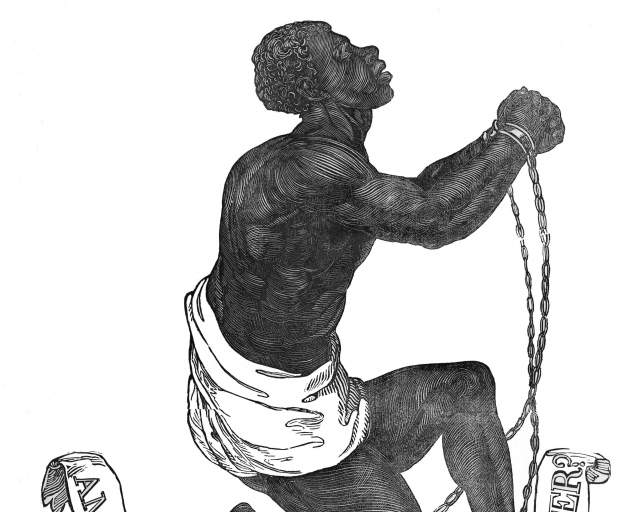Gerrit Smith’s father, Peter Smith (for whom Peterboro was named), established his homestead here in 1804. Upon his father’s death, the younger Smith inherited a fortune that he greatly expanded through shrewd business dealings. He erected various buildings, including a mansion. He also made his estate a regional center for reform agitation in such areas as abolition, temperance, and woman suffrage (nineteenth-century practice was to use the singular, woman or woman's, when referring to women as a class; later practice was to use the plural, women or women's). From this homestead, Gerrit Smith and his wife Ann Carroll Fitzhugh Smith over their lives donated an estimated eight million dollars (more than $250 million in current dollars) to a spectrum of reform causes.
Abolition Work. Smith resided here when he invited some 600 delegates to Peterboro to complete the first meeting of the reconstituted New York State Antislavery Society at the village’s Presbyterian Church on October 22, 1835.The site of that meeting now houses the National Abolition Hall of Fame and Museum. In January 1840, he hosted fellow abolitionists abolitionists William Goodell and James G. Birney at his estate to plan the establishment of the Liberty Party, the nation's first political party devoted solely to abolition. The party and its offshoots never elected a candidate, but nonetheless played modest roles in the presidential elections of 1840 and 1844, and helped shift Northern public opinion in the direction of antislavery. Smith also resided here when he was one of the "Secret Six" northern philanthropists who bankrolled John Brown’s raid on Harper’s Ferry.
So active was Smith in the abolition movement and the Underground Railroad that African American abolitionist Henry Highland Garnet wrote: “There are yet two places where slaveholders cannot come, Heaven and Peterboro.” Frederick Douglass published this comment on the front page of his Rochester-based abolition paper The North Star on December 8, 1848.
Garnet was not exaggerating; Smith spent heavily to flood he Peterboro area with abolitionist literature and speakers, hoping to demonstrate how profound the impact of intense local campaigning could be. One measure of Smith's success: voters in Madison County, New York (in which Peterboro is located) supported antislavery candidates, whenever on the ballot, by larger margins than anywhere else in the country. To Smith's disappointment, abolitionists in other areas (to be fair, few of whom had remotely similar financial resources) failed to follow his lead.
The Next Generation. Smith’s daughter Elizabeth Smith Miller resided on the estate with her husband, Charles Dudley Miller, between 1846 and late 1850. Prior to that the Millers resided as newlyweds in a small house in Cazenovia; after their four-year sojourn on the Estate, the Millers moved across the street to the House on the Green in Peterboro, one of two homes Gerrit Smith would give to the couple.
1850 Event. Late in August of 1850, Gerrit Smith conducted a two-day convention opposing the Fugitive Slave Act at Peterboro. The event featured a lecture by Frederick Douglass. (The two men had just attended a larger anti-Fugitive Slave Act convention held at Cazenovia on August 21 and 22.) The first day of convention programming took place at Peterboro Baptist Church, now long demolished. (Douglass spoke there.) The second day's program was held outdoors in a "fine grove" presumed to be the formal garden just east of the Smith mansion. This was during the period when the Millers occupied the mansion.
The Buildings and Site. The Gerrit Smith Estate contains several buildings, though not the Smith mansion, which burned down in 1936. The Estate was named a National Historic Landmark in 2001. Self-guided tours of the grounds are permitted during daylight hours; an informative visitor’s center is open Sundays from 1:00 p.m. to 5:00 p.m.
Additional information on the Gerrit Smith Estate is available here. Additional information on the Gerrit Smith Estate and other historical attractions in Peterboro is available here and here.
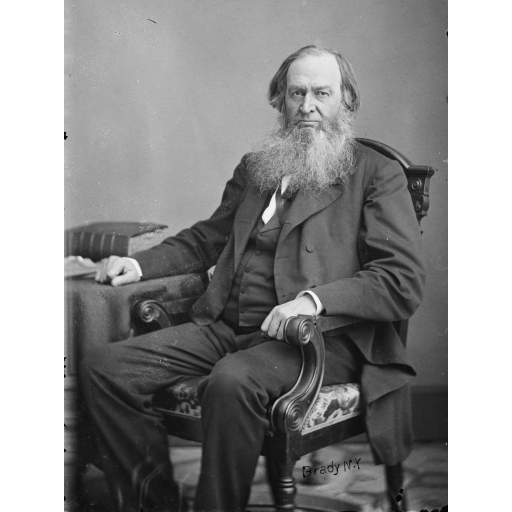
Gerrit Smith
Gerrit Smith in an undated photo portrait by Mathew Brady.
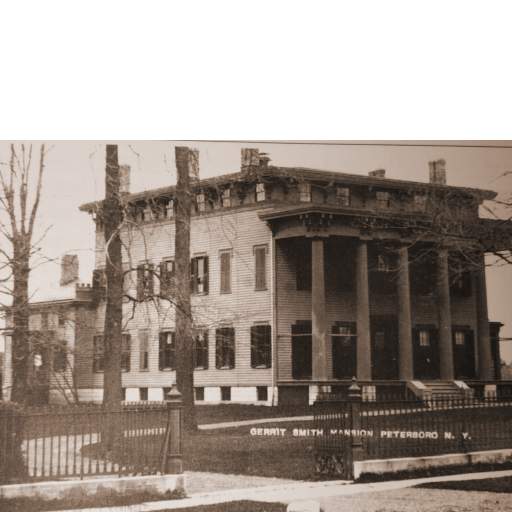
Gerrit Smith Mansion
Gerrit Smith's mansion. Photo courtesy of Norman K. Dann, used with permission.
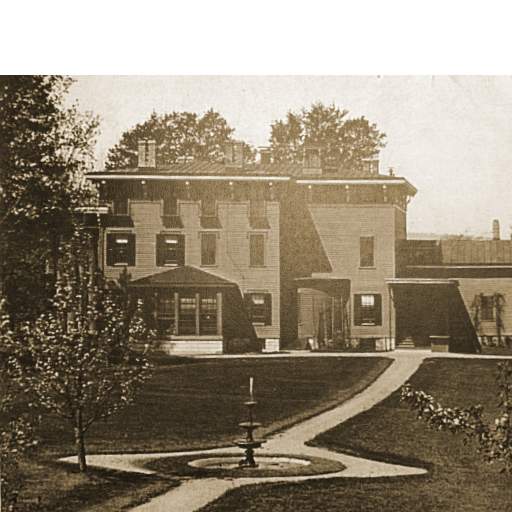
Mansion Garden
This formal garden east of the Smith mansion is believed to be the the "fine grove" described by Julia Griffiths as the site of the second day of the August 1850 anti-Fugitive Slave Law convention. Presumably Frederick Douglass attended the day's events after speaking the day before. The Smith mansion burned down in 1936; the area this garden occupied is now wooded. Photo courtesy of Norman K. Dann, used with permission.
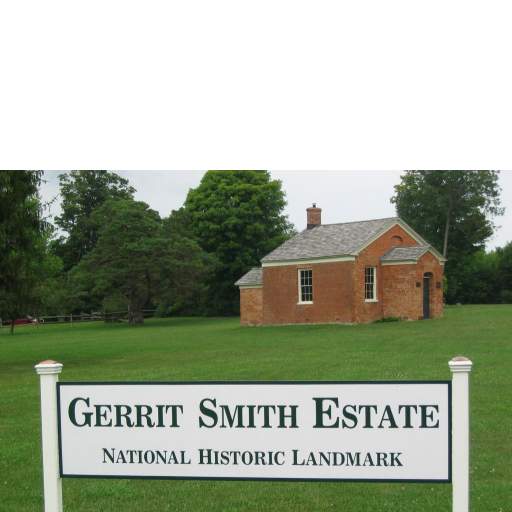
Gerrit Smith Estate
Several period buildings (though not the Smith mansion, which burned in 1936) occupy the Gerrit Smith Estate in the village of Peterboro.
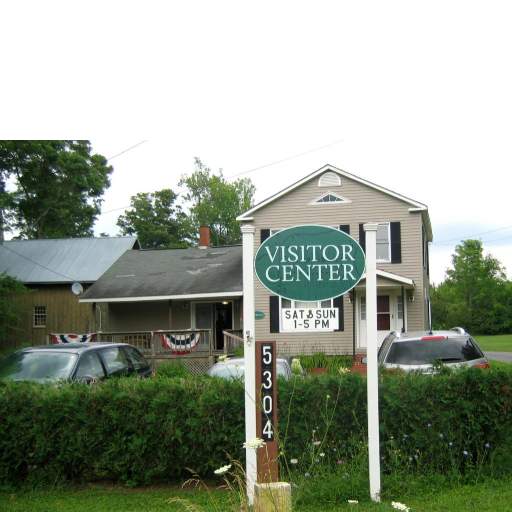
Visitor Center
This visitor center, open Sundays 1:00 p.m. to 5:00 p.m., provides interpretation of the Estate and its structures.
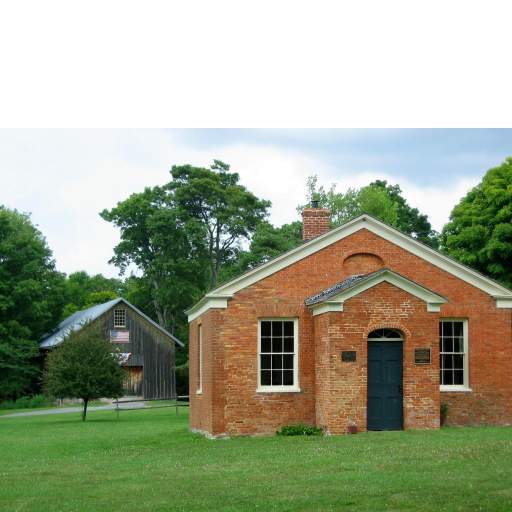
Barn and Land Office
Two of the period buildings include a wooden barn and the brick Land Office (built in 1804 by Peter Smith, founder of Peterboro and father of Gerrit Smith). The Land Office was the nerve center of Gerrit's sprawling real estate empire.
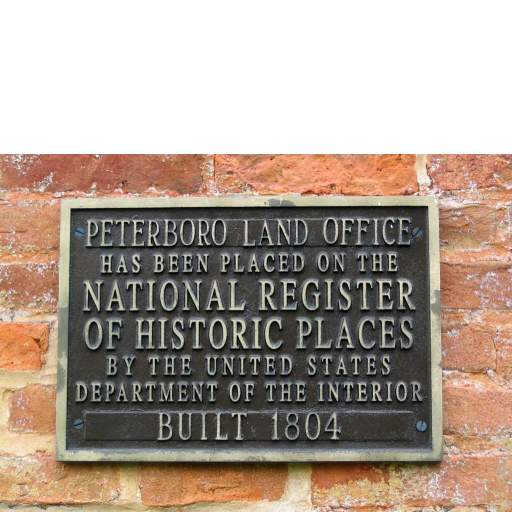
Land Office Plaque
Plaque on the 1804 Peterboro Land Office building.
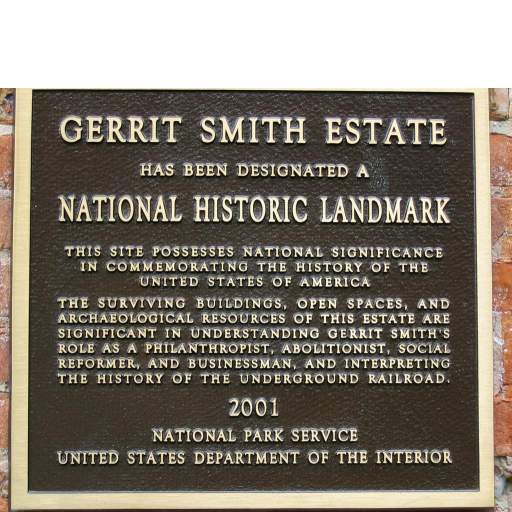
Landmark Plaque
The Gerrit Smith Estate was named a National Historic Landmark in 2001.
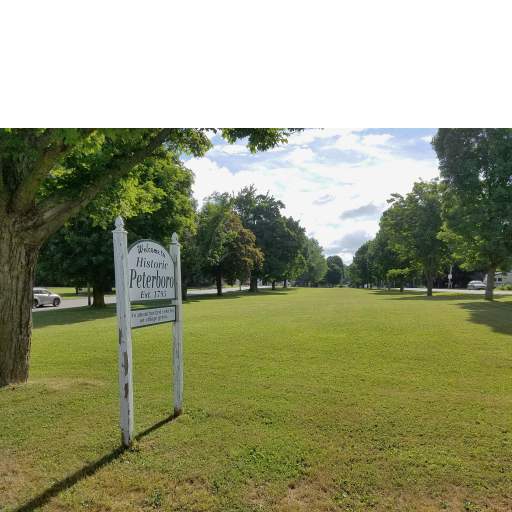
Peterboro Green
The Gerrit Smith Estate fronts on Peterboro's historic eighteenth-century village green. A rarity among New York villages, Peterboro's green remains intact, lined almost entirely with homes and commercial buildings well more than a century old. The Smith Estate is out of frame to the left in this photograph; out of frame to the right is the home where Gerrit Smith's daughter Elizabeth and her husband Charles Dudley Miller resided for some eighteen years.
Associated Historical Events
First New York State Antislavery Meeting
October 21–22, 1835
Meeting to Plan Establishment of the Liberty Party
January 1840
Fugitive Slave Law Convention at Peterboro
Late August, 1850
